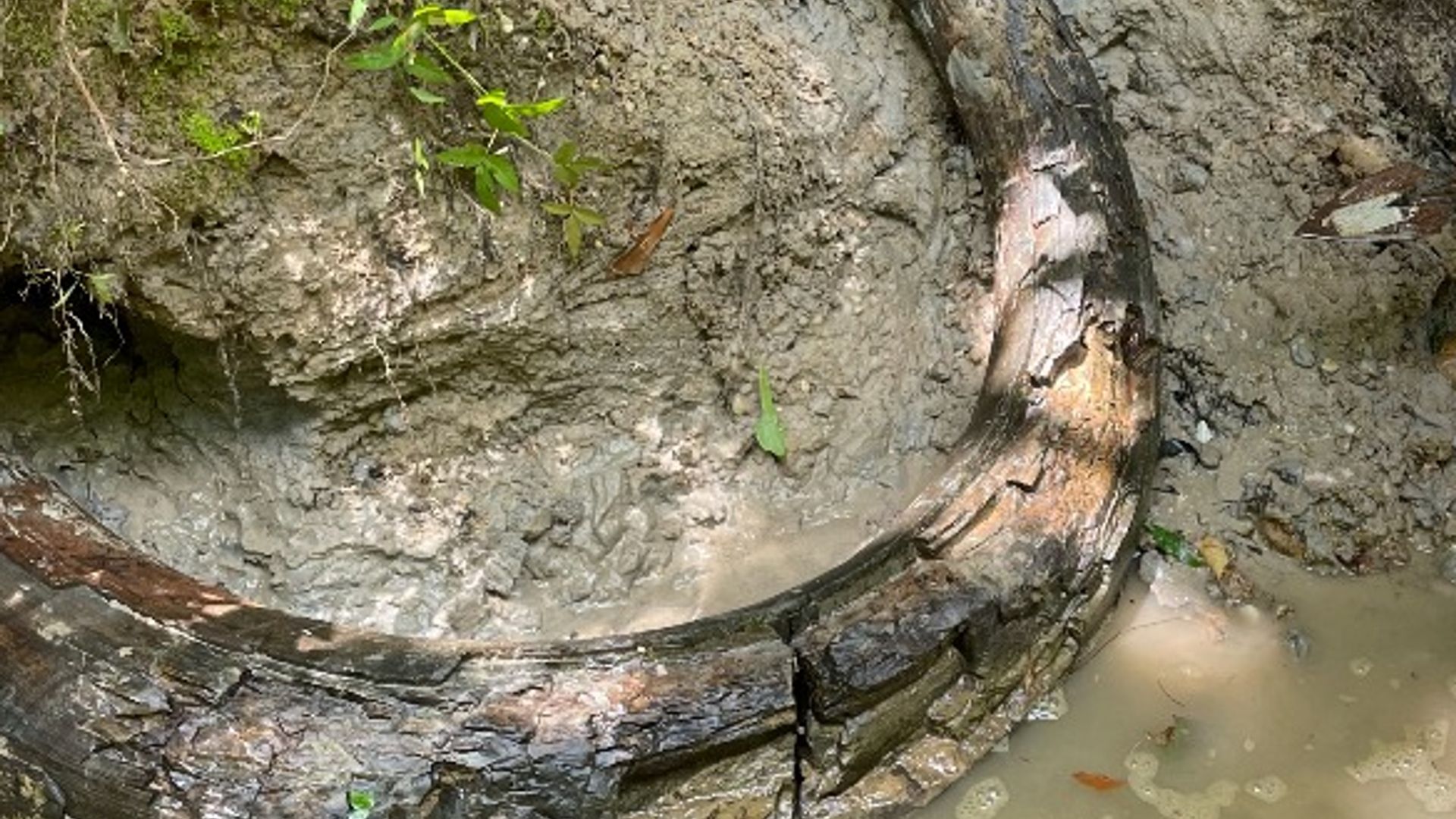
[JACK AYLMER]
WHEN EDDIE TEMPLETON WAS HUNTING FOR FOSSILS ALONG A MISSISSIPPI CREEK IN RURAL MADISON COUNTY ON AUGUST 3RD – HE STUMBLED UPON SOMETHING STICKING OUT FROM A STEEP EMBANKMENT.
GETTING A CLOSER LOOK – THE AVID ARTIFACT COLLECTOR REALIZED IT WAS A TUSK – OR AT LEAST A PORTION OF ONE FROM AN ICE-AGE ELEPHANT THAT LIVED AT LEAST TENS OF THOUSANDS OF YEARS AGO.
EDDIE REALIZED HE NEEDED TO ACT QUICKLY BECAUSE THE MODERN-DAY ELEMENTS WERE NOT ON HIS SIDE – AS THE MISSISSIPPI DEPARTMENT OF ENVIRONMENTAL QUALITY EXPLAINS THE SUMMER HEAT COULD DRY OUT THE TUSK – DESTROYING IT.
ONCE MDEQ’S SURVEY TEAM ARRIVED ON THE SCENE – THEY SAW THE FOSSIL TUSK WAS IN AMAZING CONDITION – THEN AFTER SOME DIGGING – THE DISCOVERY BECAME EVEN MORE AMAZING. THE 7 FOOT LONG TUSK WAS FULLY INTACT. (tusk photo 1 & 2)
MDEQ WRITING IN A BLOG:
“This makes it an extremely rare find for Mississippi. Most fossil tusk ivory found around the state are just fragments and most are likely to be attributable to the more common mastodon.”
BUT WAS IT A MASTODON? – THE SURVEY TEAM WAS NOT SURE AND NEEDED TO GET THE TUSK TO THE MISSISSIPPI MUSEUM OF NATURAL SCIENCE – BUT THAT MEANT FINDING THE SAFEST WAY TO REMOVE THE FOSSIL.
TO DO SO – THE TEAM CREATED A PROTECTIVE JACKET FOR THE TUSK OUT OF ALUMINUM FOIL, PLASTER AND STRIPS OF BURLAP – ALL TOGETHER WEIGHING OVER 600 POUNDS.
AFTER BEING LIFTED UP A 50 FOOT NEARLY VERTICAL BLUFF – THE TUSK WAS TAKEN TO THE MUSEUM WHERE IT WAS DETERMINED TO BELONG TO — NOT A MASTODON — BUT A COLUMBIAN MAMMOTH.
MDEQ SAYING:
“Eddie’s discovery offers a rare window into the Columbian mammoths that once roamed Madison County along the Jackson Prairie of central Mississippi.”
MDEQ OFFICIALS SAY COLUMBIAN MAMMOTHS WERE MUCH LARGER THAN THE WOOLLY MAMMOTH – GROWING UP TO 15 FEET AT THE SHOULDER AND COULD WEIGH OVER 10 TONS.
EDDIE TELLING ABC NEWS THAT THE TUSK RANKS AS ONE OF HIS TOP TWO DISCOVERIES – ALONG WITH AN ENTIRE MANDIBLE OF MASTODON HE FOUND IN 1996. HE SAYS HE’S NEXT HOPING TO FIND A MAMMOTH TOOTH.
THE MUSEUM SAYS IT PLANS TO DISPLAY THE TUSK FOSSIL FOR AT LEAST A LIMITED TIME IN THE FUTURE BEFORE IT IS SENT TO A YET-TO-BE-DETERMINED PERMANENT LOCATION.
FOR MORE OF OUR STORIES DOWNLOAD THE STRAIGHT ARROW NEWS APP.











